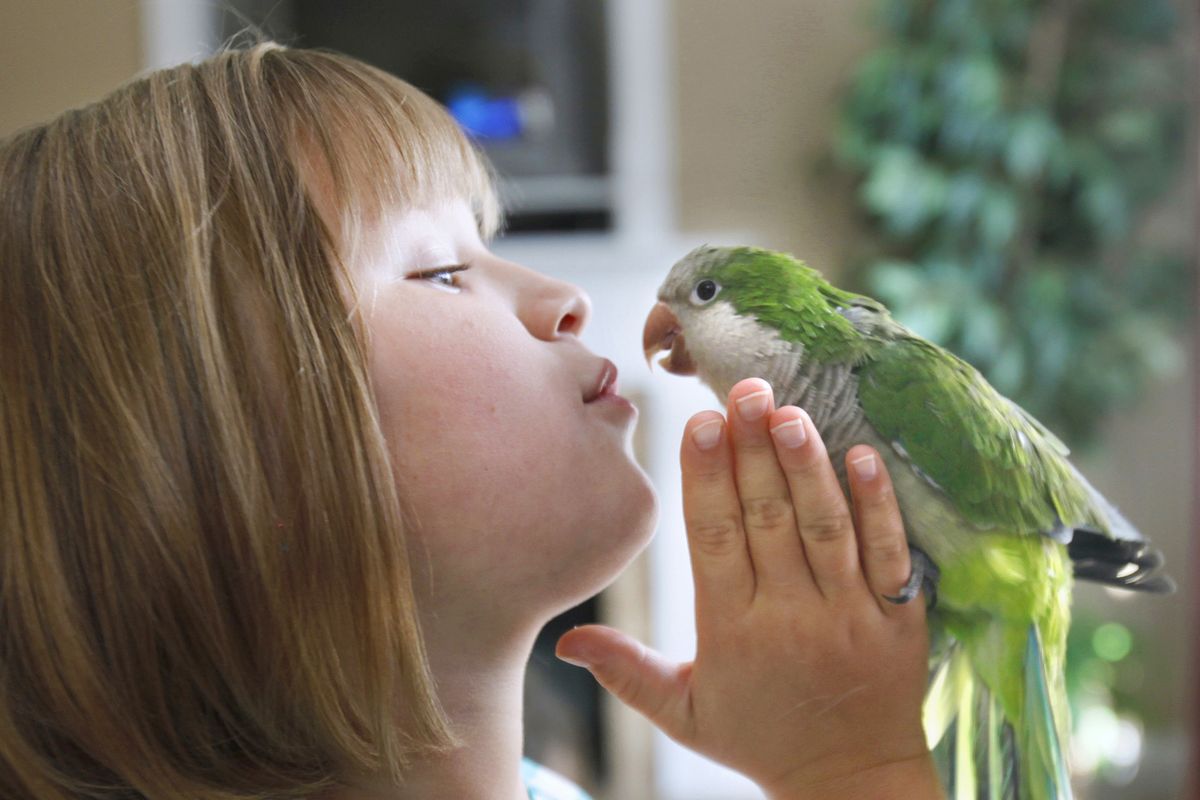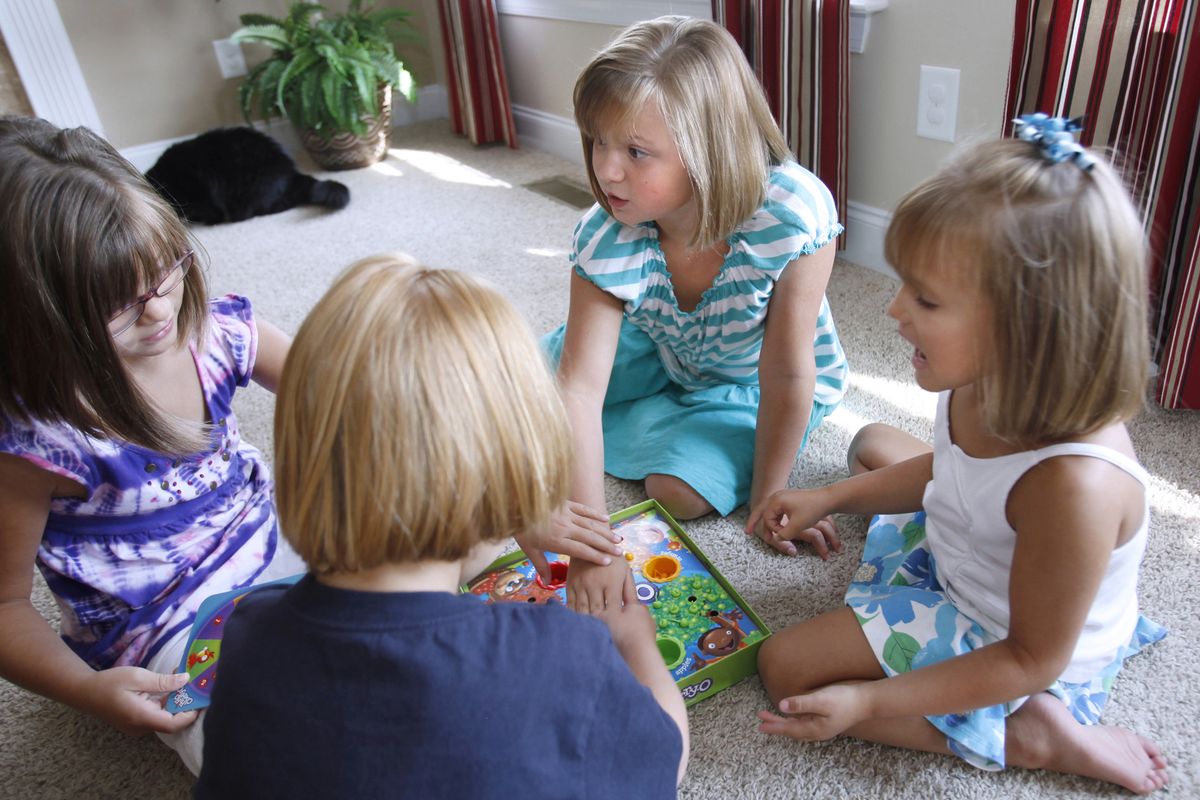Hard-to-diagnose infections lead to odd behaviors in kids
Karli Bossman, 8, of Clayton, N.C., plays with a pet at her home recently. Karli has suffered with a little-known illness called PANDAS, which is triggered by strep infections and causes disorders such as OCD symptoms.
CLAYTON, S.C. – Karli Bossman’s odd behaviors came in a sudden, overwhelming wave.
Karli, then 5, had loved going to kindergarten, but suddenly she began grabbing door frames and fighting furiously to stay home every morning when her parents tried to take her.
She was afraid to ride in cars because she feared they would run out of gas. She wouldn’t go anywhere there was an elevator.
Except for one or two favorite pair, she refused to wear underwear, saying it hurt. She ripped off her shoes and socks no matter how many times her parents put them back on before school.
Karli had been sweet and gentle, but now there were meltdowns; she threw stuff.
At first, Kelly and Kevin Bossman thought their oldest daughter was just being a defiant kid. But then it became clear that no consequences could persuade her to stop acting on her obsessions.
They took Karli to a doctor. Then a psychologist. Then another. Quickly the list of medical professionals they had tried began to mount.
The Bossman family didn’t know it yet, but they had begun what has become a three-year, 11-doctor, three-psychologist odyssey through the medical system to get Karli’s mysterious problem diagnosed and treated.
“I would go through every doctor in a practice, and none of them would have anything to offer me, so we’d just switch practices,” says Kelly Bossman.
Finally – after a host of conflicting diagnoses, and a frightening regimen of powerful antipsychotic drugs for Karli – Chris Mauro, a psychologist at Duke University, diagnosed a children’s illness that only recently has begun to be accepted by some members of the medical community: Pediatric Autoimmune Neuropsychiatric Disorders Associated with Streptococcal Infection, which goes by the acronym PANDAS.
The Bossmans, who had heard of PANDAS but had given up suggesting it as a possibility to skeptical doctors, persuaded a doctor to at least try a course of antibiotics, a basic treatment for the disease.
“Within 48 hours we were meeting another kid who we hadn’t seen in a long time,” Bossman says. “She was really sweet.”
Diagnosed patients and doctors who are knowledgeable about PANDAS are spread so thinly that it takes the Internet to stitch them together through websites such as the PANDAS Support Network, and the Facebook page for PANDAS parents.
That support is crucial, say parents and doctors, because the condition is as tricky to manage as it is to diagnose.
PANDAS was first identified in the mid-1990s. The question of whether it actually existed was controversial, but recent research, including a 2009 study at Columbia University, has bolstered the case for the condition, and the National Institute of Mental Health formally recognizes it.
Researchers believe that strep infections trigger an immune response that goes awry, causing anxiety, obsessive-compulsive behavior and physical or verbal “tic” symptoms.
A girl in Chesapeake, Va., for example, sneezed an estimated 12,000 times a day for months until she got proper treatment. A while later she developed an eye twitch.
Gradually, the number of doctors who have heard of PANDAS is increasing, but those with expertise in treating it are still so rare that lengthy searches for help like the Bossmans’ are typical, says Sara Davis Furr of Dunn, N.C.
Her 8-year-old son Gage was diagnosed with PANDAS after he came home from school one day giving vivid descriptions of snakes that only he could see and leaping awake at night to rip off his clothes.
The symptoms can wax and wane, sometimes apparently in association with a new case of strep or other infections. Once, in Karli’s case, Lyme disease triggered a fresh wave of symptoms.
The far-flung nature of doctors in the know about PANDAS means that even after families finally get the right diagnosis, they may have to travel several states away for help.
Furr says she was lucky, because antibiotics have kept Gage’s symptoms mostly under control. But she knows a family in Virginia that must travel regularly to doctors in Maryland and Connecticut.
Every few weeks, the Bossmans pack up all four of their kids and drive to Darien, Conn., so Karli can see Dr. Denis Bouboulis, an immunologist who is among the nation’s top experts in treating PANDAS.
Furr says her family and Gage’s school were supportive, but the Internet community is all the more important because many PANDAS parents she corresponds with say their broader families are skeptical.
“A lot of people think you just did a bad job raising your child,” she says.
PANDAS is almost certainly under-diagnosed, but it’s unclear how common it is.
Bouboulis, who is a member of the board of directors of the PANDAS Support Network, has said as many as 5 percent of all children could have it.
But Dr. John March, chief of child and adolescent psychiatry at Duke University Medical Center and an internationally recognized expert in obsessive-compulsive disorders among children, thinks it’s rare.
Of the more than 1,000 children with OCD he has worked with, March says only a handful have a sure diagnosis of PANDAS.
“I actually think PANDAS exists, I just don’t think it’s very common,” he says.
“Most pediatric tic disorders aren’t terribly common, but they’re not rare either, while strep infections are clearly quite common. And I think that leads to a lot of people putting two and two together in a specific case when in fact the link isn’t all that clear.”
Still, it’s important not to miss a proper diagnosis for PANDAS, March says, because it’s important to get the treatment right.
Karli is better, but she isn’t cured. Kelly Bossman, frustrated by how few parents and doctors know about PANDAS, has become a kind of evangelist for spreading information about it.
“What I really, really hope to do is I guess bring awareness to doctors here. I d like them to learn a little more about it,” she says.
“Also, I’ve met so many moms online, and seeing what Karli has been through, you just worry about how many kids out there are being given these antipsychotics or no treatment at all, and who really need antibiotics.”

